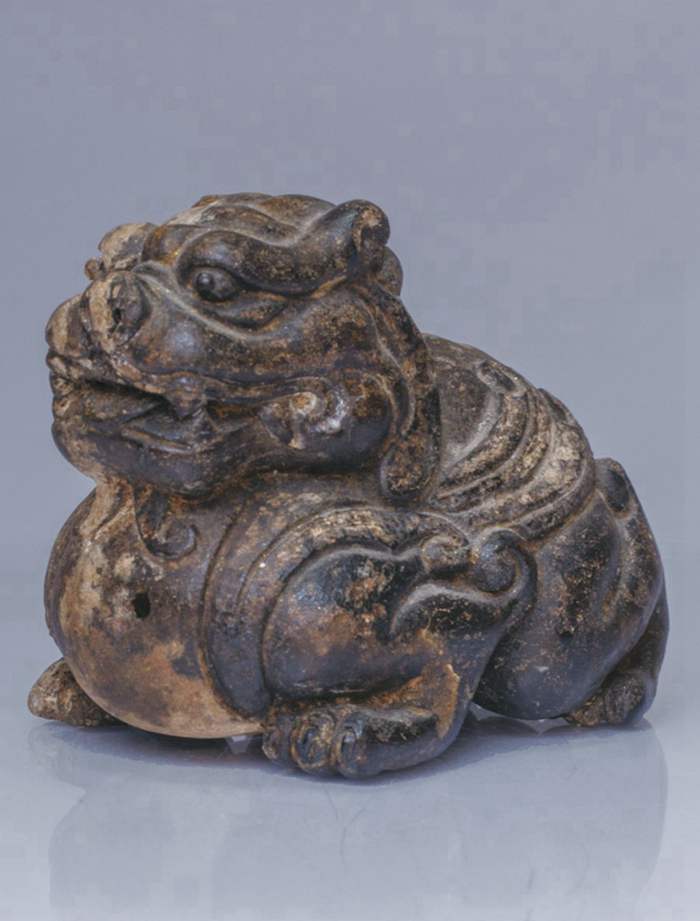Explore bodiless lacquerware painting techniques in Fuzhou (11)
 |
| Photo shows a piece of bodiless lacquerware in the shape of a beast. (Photo courtesy of Zhu Bing) |
Fuzhou’s bodiless lacquerware painting techniques have a history of more than 200 years and enjoy a similar reputation with other specialized painting techniques, including Jingtailan, a special cloisonne wrought with copper and porcelain found in Beijing and the porcelain-making techniques of Jingdezhen city found in east China’s Jiangxi province. In 2006, Fuzhou’s bodiless lacquerware painting techniques entered the list for the first batch of national intangible cultural heritage.
Recently, Fujian province, which administers Fuzhou, passed regulations on the protection of Fuzhou’s bodiless lacquerware painting techniques. Zhu Bing, who took part in the compilation of the regulations and is also one of the inheritors of the specialized painting techniques, expressed that the regulations were of great significance in boosting the development of the techniques.
The bodiless lacquerware painting techniques, as the name suggests, involve a process for producing an original body with clay and plaster, drying the original body by covering it with a cloth layer by layer, and discarding the original body to leave a finished product in the form of a shaped lacquered cloth. Afterwards, a gray background is added to the shaped lacquered cloth, then polished, repainted with lacquer and abraded, with various decorative patterns finally embellishing the exterior surface. “It takes a long time to finish a piece of bodiless lacquerware, and longer, for example two to three years, when it comes to making a Buddha statue,” Zhu introduced.
The shape of the lacquered cloth has an important effect on the final product, with the decorative patterns also being a determining factor for the end result. Most lacquerwares have a brown, black or red background, while Fuzhou’s bodiless lacquerwares are painted with brightly-colored paints, with craftsmen also using gold powder as a blending element to make the wares even more colorful and elegant.
According to historical records, the bodiless lacquerware painting techniques in Fuzhou originate from the Qing Dynasty (1644-1911). But due to various reasons, some of the techniques are now on the verge of extinction. According to Zhu, he has been able to protect and inherit the bodiless lacquerware painting techniques by learning skills from senior craftsmen and enriching his knowledge of the content in old documents that record the processes involved in performing the techniques.
To carry forward the techniques, the Fujian provincial and municipal culture and tourism departments have established booths for bodiless lacquerware craftsmen to use for free to display the products during various culture expos held across the country. In addition, by opening bodiless lacquerware courses, a number of vocational schools in Fuzhou have cultivated talents to carry forward the technique.
 |  |
Photos
Related Stories
- Explore simple, idyllic fishermen's life in Fujian's small village
- Guling in Fujian leverages legacy of international exchanges, eyes spot as global tourist destination
- In pics: water gates on Minjiang River in Fujian
- East China's Fujian to host cross-Strait youth festival
- China's Fujian appoints acting governor
- China's Xiamen clears COVID-19 medium, high risk areas
- Latest COVID-19 outbreak in China's Fujian under control: official
Copyright © 2021 People's Daily Online. All Rights Reserved.










